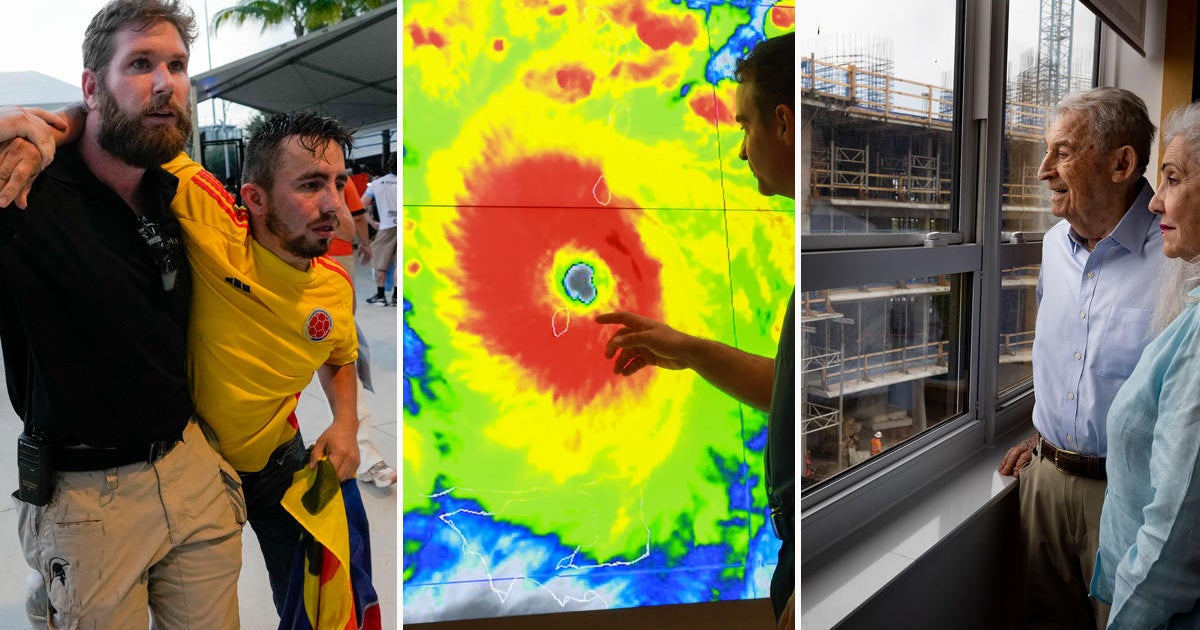Floria nursery industry takes hurricane hit
TALLAHASSEE - Greenhouse and nursery-grown plants, particularly holiday poinsettias, might be in short supply and cost more because of damage in Hurricane Milton.
Florida's nursery industry hopes to be included in potential federal disaster aid that is expected to address damage to ranches, citrus groves and row crops in a series of recent disasters.
Tal Coley, CEO of the Florida Nursery, Growers and Landscape Association, said Thursday the nursery industry hopes Congress will address agricultural assistance after the Nov. 5 election and include the industry in any supplemental funding or block grants.
"In the past, our industry, they've kind of been left at the chopping block and haven't been able to access some of those funds," Coley said. "My hope is that everyone will be able to access any type of relief that does come."
Coley met Thursday with Robert Bonnie, who works closely with the federal Farm Service Agency as the U.S. Department of Agriculture's undersecretary for natural resources and environment.
In late September, Congress passed what is known as a continuing resolution that extended government funding through Dec. 20. The measure didn't include additional money for disaster relief programs under the Federal Emergency Management Agency.
"It seems like both sides agree that something needs to be done, but everybody's kind of waiting to see what happens in two weeks," Coley said, referring to the upcoming election. "So, right now, it's just a lot of data collection, which we're very happy to do."
Also waiting is Florida's citrus industry, which got slammed by Hurricane Milton as it was still recovering from damage in 2022's Hurricane Ian.
Matt Joyner, CEO of Florida Citrus Mutual, on Wednesday told members of the Florida Citrus Commission that pockets of the industry suffered "well over 50, 60 and even 80 percent loss" from Milton, which made landfall Oct. 9 in Sarasota County as a Category 3 storm and remained a hurricane as it crossed the state.
Milton came after Hurricane Helene hit the state in late September. Coley said damage assessments have continued from Helene, which swept along the state's West Coast before making landfall in Taylor County, and from Milton, which had a wider impact on the state.
Greenhouses along the West Coast were damaged in Helene, while Milton cut inland and also spawned deadly tornadoes in the Treasure Coast region, where many poinsettias are grown.
"You had the actual hurricane wind damage there in the Bradenton, Sarasota areas, with some greenhouses taking some pretty good damage up there," Coley said of Milton. "And then, we started getting calls from folks down in Loxahatchee, Fort Pierce, with regards to the tornadoes, which was really not on the radar for anyone."
The Florida Nursery, Growers and Landscape Association and Farm Credit of Central Florida estimate the nursery and landscape industry generates $31.4 billion a year in sales.
Preliminary findings by the University of Florida Institute of Food and Agricultural Sciences, known as UF/IFAS, estimated that Hurricane Debby, which hit North Florida's Big Bend region Aug. 5 with 80 mph sustained winds, caused $93.7 million to $263.2 million in agricultural losses. Greenhouses and nurseries accounted for between $15 million and $53.6 million of that total.
The university has not released estimates from the larger Helene and Milton.
A preliminary damage report on Milton from the state Department of Agriculture and Consumer Services estimated losses to farmers and other agricultural interests between $1.5 billion and $2.5 billion. The department noted that "nurseries and sod farms suffered significant damages in the affected counties including wind damage, power outages, flooding and saltwater intrusion due to the hurricane's storm surge."




